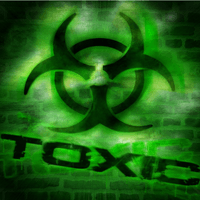
Got a plan for staying safe if an environmental disaster strikes your town? This summer’s string of toxic emergencies – a refinery fire in California, a chemical blaze in a Baltimore train tunnel, explosions at a PCB-riddled New York recycling company – all sent plumes of hazardous chemicals into the air breathed by tens of thousands of people. These events raise an important question we want you to ask yourself today: Would you know what to do to protect yourself and your family if such an event happened in your town?

We’re not trying to be a pair of paranoid Chicken Littles here; just the opposite. Almost everyone lives downwind of a highway, a train line, a pipeline or a manufacturing facility where toxic trouble could flare up fast. Case in point: In August, an early morning fire ripped through an electrical equipment recycling plant in West Ghent, N.Y. Local firefighters rushed to the scene, but didn’t have the resources to immediately warn residents to stay indoors and shut the windows. Smart people did what the local fire company president now advises everyone, everywhere, to do: “Every citizen,” he wrote in an extremely frank editorial in the local newspaper, “ought to have his or her own plan for how to respond to an emergency. …
… Sitting around passively waiting for police or fire to arrive with detailed instructions on how to respond isn’t a winning strategy.”
 And even now, Ghent-area residents are worried that toxins from the plant – including polychlorinated biphenyls (PCBs), lead, chromium and volatile organic compounds in the smoke and soot – became airborne and settled on farms, backyards and in water. (It’s imperative that thorough, long-term sampling and testing of air, soil and water continue for some time after an environmental assault such as the one in Ghent.)
And even now, Ghent-area residents are worried that toxins from the plant – including polychlorinated biphenyls (PCBs), lead, chromium and volatile organic compounds in the smoke and soot – became airborne and settled on farms, backyards and in water. (It’s imperative that thorough, long-term sampling and testing of air, soil and water continue for some time after an environmental assault such as the one in Ghent.)
Clearly, it’s up to you to know how to stay safe. Here’s how:
No. 1: Know where danger lurks. You can’t anticipate everything, but being aware of the sources for potential emergencies in your area will help you react faster if something happens.
No. 2: Create a family emergency kit and plan. FEMA (Federal Emergency Management Agency) recommends stocking non-perishable food, plenty of bottled water, a flashlight with batteries and a battery-powered or hand-crank radio. Add in plastic sheeting and duct tape, too. Also plan for how you’ll communicate and where to meet up if your family is dispersed when disaster strikes. Designate an out-of-town relative or friend as a contact person. You’ll find a form for creating a complete plan on FEMA’s website, at www.ready.gov/make-a-plan.
No. 3: Shut the windows. If a fire, explosion, chemical release or other hazardous materials foul the air, bring kids and pets indoors ASAP. Shut windows and turn off air conditioners that draw in outdoor air. Seal gaps at doorways, windows and vents with wet towels or plastic sheeting and duct tape.
No. 3: Keep the indoors clean. If you must go out, take off shoes and clothes at the door to avoid carrying toxics inside.
No. 4: Drink bottled water. Think twice about using tap water until the danger is past.
No. 5: Have a getaway strategy. If you’re downwind in a toxic emergency or if the threat’s serious, you may have to leave home in a hurry. Always keep your car’s gas tank at least half-full. Gather the family (and pets), roll up the car windows and head toward cleaner air. Stay away until the danger passes, if possible. (Put clothes and shoes you wore in sealable plastic bags or containers; ask emergency authorities about disposal.)
No. 6: Eat smart. Afterward, steer clear of locally grown produce that may have picked up toxins from rain and the soil. Load your plate with cruciferous veggies and berries (raised elsewhere) and flavor with curry, saffron and hot pepper. According to our friend Mitchell Gaynor, M.D., an integrative oncologist and author of “Nurture Nature Nurture Health: Your Health and The Environment,” these support your body’s natural detox processes.
– Dr. Michael Roizen & Dr. Mehmet Oz
© 2012 Michael Roizen, M.D. and Mehmet Oz, M.D. Distributed by King Features Syndicate, Inc.

